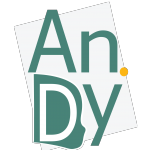motivation
In recent years, the physical separation between humans and robots has started to disappear, with robots moving from a purely secluded industrial context into the human world. Applications of physical human-robot collaboration (pHRC) are becoming more common in industrial, rehabilitation and service robotics (e.g., bi-manual cooperation and assembly with collaborative robots or physical assistance with exoskeletons). Successful and comfortable cooperative execution of a task requires intuitive, efficient and safe interaction between both actors. Physical collaboration between a human and a robot therefore entails a series of questions on the understanding and modeling of human movement, and their applications to human-centered design and control of robots. On one hand, assistive robots need to anticipate and adapt to the user's movements to provide the appropriate assistance. On the other hand, robots' behaviors need to be easily understandable by humans to enable a seamless interaction and facilitate robots deployment. Only then can the physical capacities of assistive robots fully serve human benefit.
Compared to past workshops on related topics, our workshop emphasizes the human side of the collaboration by bringing together experts from both the neuroscience and the robotics communities who share a common interest in this growing field of pHRC. Neuroscience experts will review existing knowledge, concepts and tools for the understanding and modeling of human cooperative movement, while robotics experts will present applications and challenges of human-robot collaboration. Such exchanges are intended to pave the way towards the development of common research directions.
format
The workshop will consist of invited talks (30 min each including 5 min for Q&A) and spotlight presentations from selected contributions after a call for contributions (posters and demonstrations). The workshop will close with a panel discussion (1 hour).
dissemination
Audio and video recordings of all invited talks (including Q&A), spotlight presentations from selected contributions, and panel discussion will be made available after the workshop on this site. In addition, extended abstracts for all contributions (posters and demonstrations) will also be available on this site.
topics of interest
Human motor and neuromuscular control
Kinematic and dynamic modeling of human movement
Measurement and analysis of human movement
Prediction of human movement
Human-human collaboration
Physical human-robot collaboration
Human movement informing the design and control of assistive devices
Ergonomics in pHRC
Safety in pHRC
Exoskeletons and wearable robots
Industrial collaborative robots
support from IEEE RAS technical committees
This proposed workshop has received support from the following IEEE RAS technical committees:
Collaborative Automation for Flexible Manufacturing
Human Movement Understanding
Human-Robot Interaction and Coordination
Model-based Optimization in Robotics
Neuro-Robotic Systems
Rehabilitation and Assistive Robotics
Wearable Robotics
funding


This workshop has received funding from the European Union’s Horizon 2020 research and innovation program under grant agreement No. 731540 (An.Dy), CPER IT2MP of Région Grand-Est, FEDER, and INRIA. The content of this site is the sole responsibility of the authors. The European Commission or its services cannot be held responsible for any use that may be made of the information it contains.